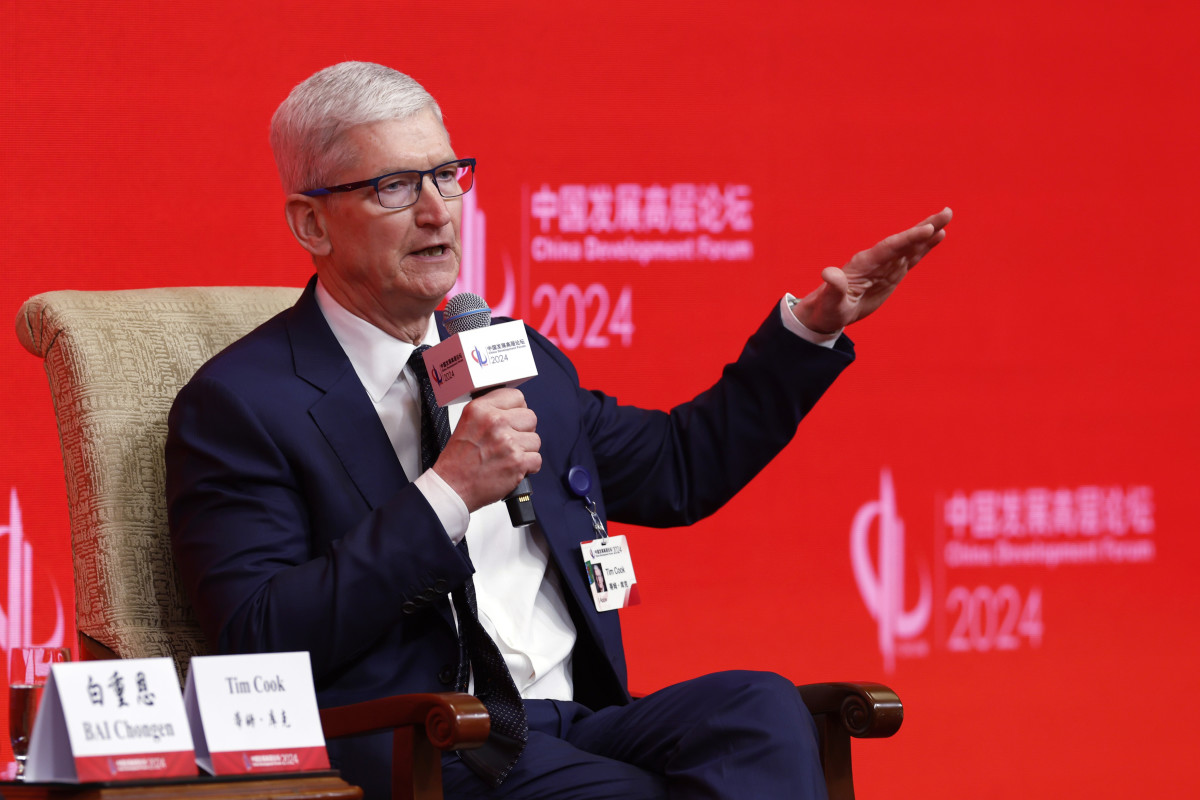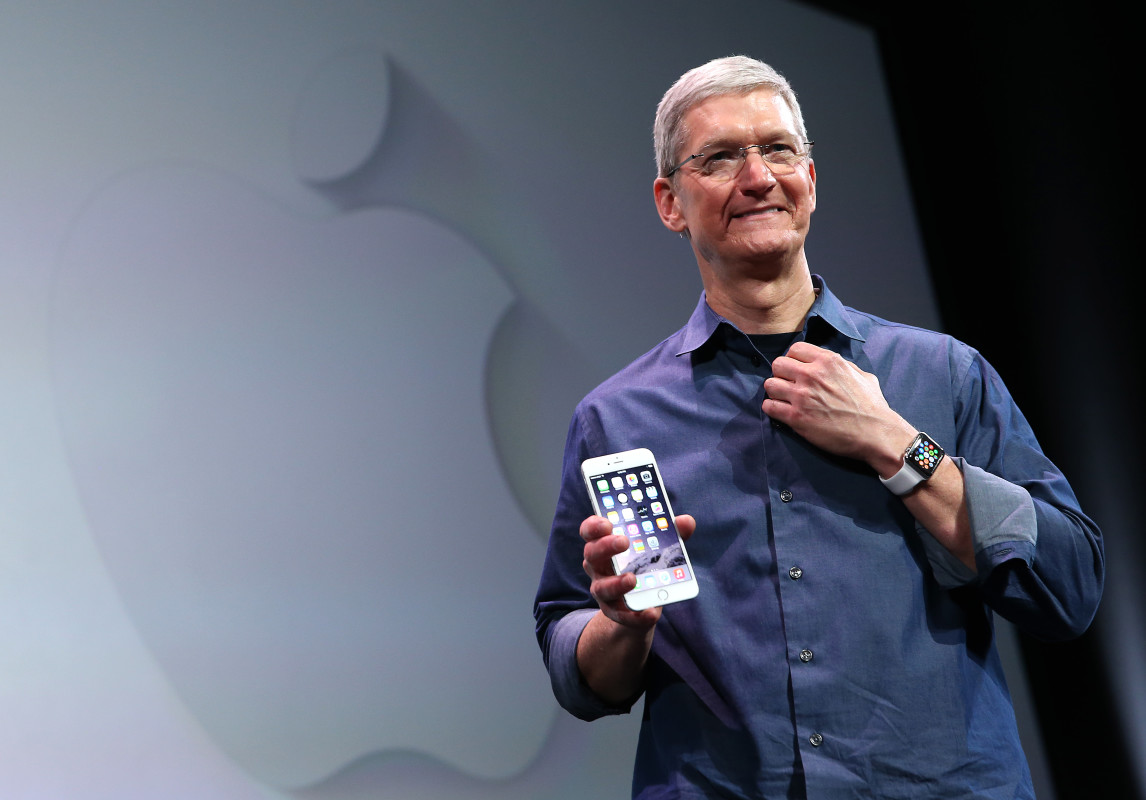
For many years, one of the stock markets' great truths has been to buy and forget Apple stock in portfolios. That mantra has certainly paid off, given that Apple has returned an eye-popping 38,187% over the past twenty years.
Still, a set-it-and-forget-it approach to owning Apple stock is being tested in 2024.
Apple's shares rallied 21% from last October's low to their peak in mid-December, but since then it's been nothing but down..down..down, falling 9% this year alone. That's a stark (and disappointing) contrast to the S&P 500's 8% gain.
Apple investors have soured on the stock for various reasons. Sales in China are lackluster amid the U.S. versus China technology tit-for-tat, and an absence of a clear strategy for the company to profit from artificial intelligence has also weighed down optimism.
Still, the unexpected underperformance for one of the most widely owned stocks in the world has likely surprised many.
One analyst who wasn't shocked by Apple's drop is TheStreet Pro's Bruce Kamich. Kamich, an analyst who has evaluated markets and stocks for over 50 years, told investors in January to "Avoid the long side of the stock."
Kamich recently updated his Apple stock analysis and given his prescient prior advice, investors may want to pay attention to what he thinks will happen next.

Apple's iPhones lose their luster
Apple revolutionized how we communicate and consume information when co-founder Steve Jobs introduced the iPhone in 2007, arguably ushering in the smartphone era.
Related: Apple teases transformative new iPhone experience
The iPhone became Apple's (AAPL) most significant product, with 2.3 billion sold over the years, and an estimated 1.4 billion currently active worldwide.
The global adoption of the iPhone has been a boon to Apple's revenue and profit. In Apple's fiscal first quarter ending December, total iPhone revenue was $69.7 billion, or 58%, of Apple's $120 billion in sales. Services revenue, including the App Store, was $23.1 billion.
That's a lot of money, but, in a hat-tip to the "law of big numbers," it's become increasingly difficult for the company to deliver year-over-year growth. In the December quarter, revenue only inched 2% higher than the prior year, its best growth in five quarters.
Worse, that growth was largely due to an easy comparison caused by supply shortages, which reduced sales in the previous year. For the quarter ending March, Apple's guidance is lackluster.
"In the March quarter a year ago, we were able to replenish channel inventory and fulfill significant pent-up demand from the constraints. We estimate that this impact added close to $5 billion to the March quarter's total revenue last year," said CFO Luca Maestri during last quarter's earnings conference call. "When we remove this impact from last year's revenue, we expect both our March quarter total company revenue and iPhone revenue to be similar to a year ago."
That's not enough of a needle-move to keep growth investors happy, and it hardly justifies a rich valuation premium like in the past.
Apple faces China and AI challenges
The smartphone market is huge, but competition is fierce, especially in China where the government has reportedly encouraged state workers and workers in sensitive industries to buy Chinese handsets, such as those made by Huawei and Xiaomi.
Related: Report: Apple's Macs are about to get a major upgrade
The combination of a China economy still struggling to emerge from a Covid fog and the back-and-forth between officials there and in the U.S. over access to technology has caught Wall Street's attention.
In January, Barclays' analyst Tim Long surprised by downgrading Apple to "underperform."
“We are still picking up weakness on iPhone volumes and mix, as well as a lack of bounceback in Macs, iPads, and wearables,” said Long.
It's not just China that has got investors nervous, though. There's also been a lack of insight into Apple's artificial intelligence plans.
OpenAI's ChatGPT launch in December 2022 uncorked a flood of AI research and development. This led many companies to respond with AI strategies to profit from the growing adoption of generative AI apps.
Microsoft quickly incorporated ChatGPT into its search engine, Bing, and after taking a stake in OpenAI, created a host of ChatGPT-powered solutions available to businesses and consumers through its Copilot service. Google-parent Alphabet, known for its Android smartphones, has launched its large language AI model, Gemini, staking its turf in the burgeoning space. Facebook- and Instagram-parent Meta Platform is also in the AI hunt with its LLM, Llama. They're far from the only companies diving into AI, but you get the gist. Seemingly, everyone has an AI plan.
Apple is absent from the discussion, at least beyond the rumor mill.
Reportedly, Apple is working on AI, and CEO Tim Cook is notorious for keeping research efforts under wraps. Recently, there's word that Apple is kicking tires with Google for access to Gemini and Baidu for access to its LLM, Ernie, to power next-generation iPhones to be announced later this year at its annual event, usually held in September.
Still, with nothing officially decided, investors wonder if Apple will miss an opportunity to establish itself early on in an industry that thought leaders believe could transform just about everything.
Apple's stock charts offer insight into what's next
Kamich is a technical analyst who has used price, volume, and momentum activity to gain insight into what could happen to stocks for over 50 years. His interpretation of technical indicators was behind his correct forecast in January that Apple's stock was likely to fall.
Following Apple's sell-off, Kamich updated his analysis of Apple's charts on April 11. Unfortunately for shareholders, Kamich remains concerned.
More AI Stocks:
- Analyst unveils eye-popping Palantir stock price target after Oracle deal
- Veteran analyst delivers blunt warning about Nvidia's stock
- Analysts revamp Microsoft stock price target amid OpenAI reports
"I can see a double top pattern around the $200 area. The shares have turned lower and trade below the declining 40-week moving average line," said Kamich. "The weekly [On-balance volume] OBV line has weakened the past three months. The MACD oscillator fell below the zero line in March for an outright sell signal. Red candles (bearish) and upper shadows dot the chart over the last three months."
For Kamich to be bullish, he'd like to see on-balance volume – essentially a measure of up minus down day volume – rising, and MACD positive, suggesting buyers have retaken control.
Kamich also used point-and-figure charts to calculate Apple's stock price targets. Those aren't very reassuring, either. Using a daily and weekly P&F chart, he calculates Apple's share price could head to $149 and $116, respectively.
Of course, point-and-figure chart targets aren't guaranteed, and they don't suggest timing for when a price target could be reached. Nevertheless, Kamich's bearish analysis suggests that the risk-to-reward is unfavorable.
As a result, investors may want to approach Apple cautiously until more insight into its AI plans and investor sentiment improves.
Related: Veteran fund manager picks favorite stocks for 2024







